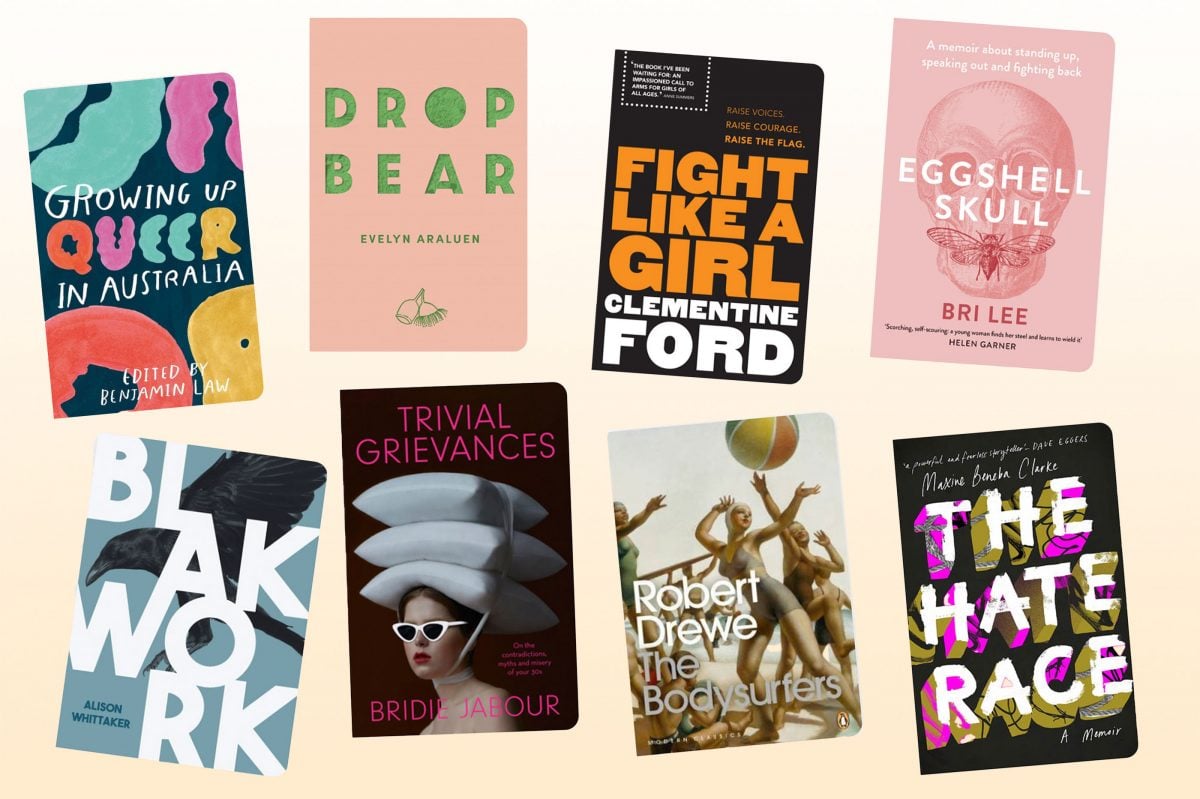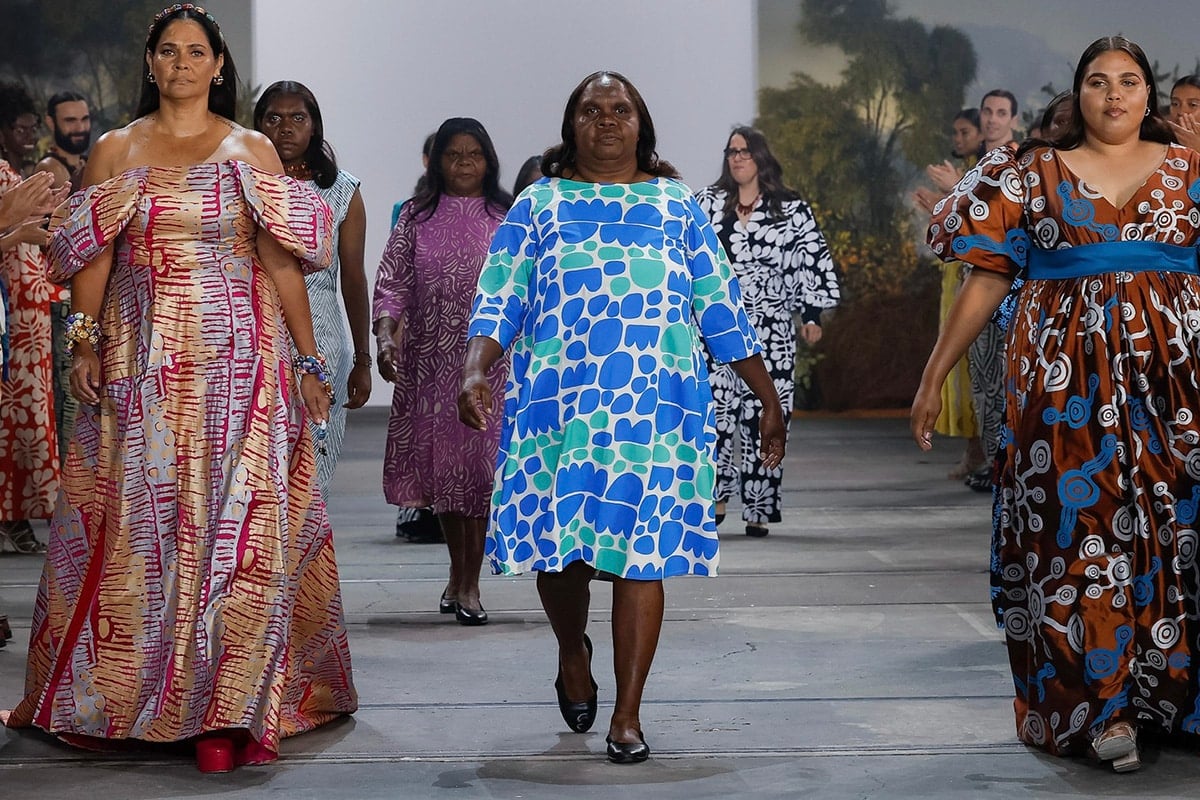
It would be a misstep to exclude fashion from the category of art. Anyone who looks at the clothes from Romance Was Born, Jordan Dalah or Jordan Gogos will note the way they appear more sculpture than uniform.
In fact Australian Fashion Week is where all the art disciplines converge. Where set designers mingle with stylists and makeup artists share space with musicians. Sometimes you'll even see it on the runway too; models become actors and dancers put their best foot forward. At AAFW 2023, it's clear art was there to soak up as much of the spotlight as the fashion rolling through. Whether that was at the debut Ikuntji Artists show, where sacred Tjukurrpa (Dreaming) stories that began as artworks were integrated into clothing design or at Iordanes Spyridon Gogos, where disused textiles formed a key part of the set design. At AAFW 2023, it was clear fashion and art go hand-in-hand.
At Verner it's all about the interplay between Australiana and resort wear
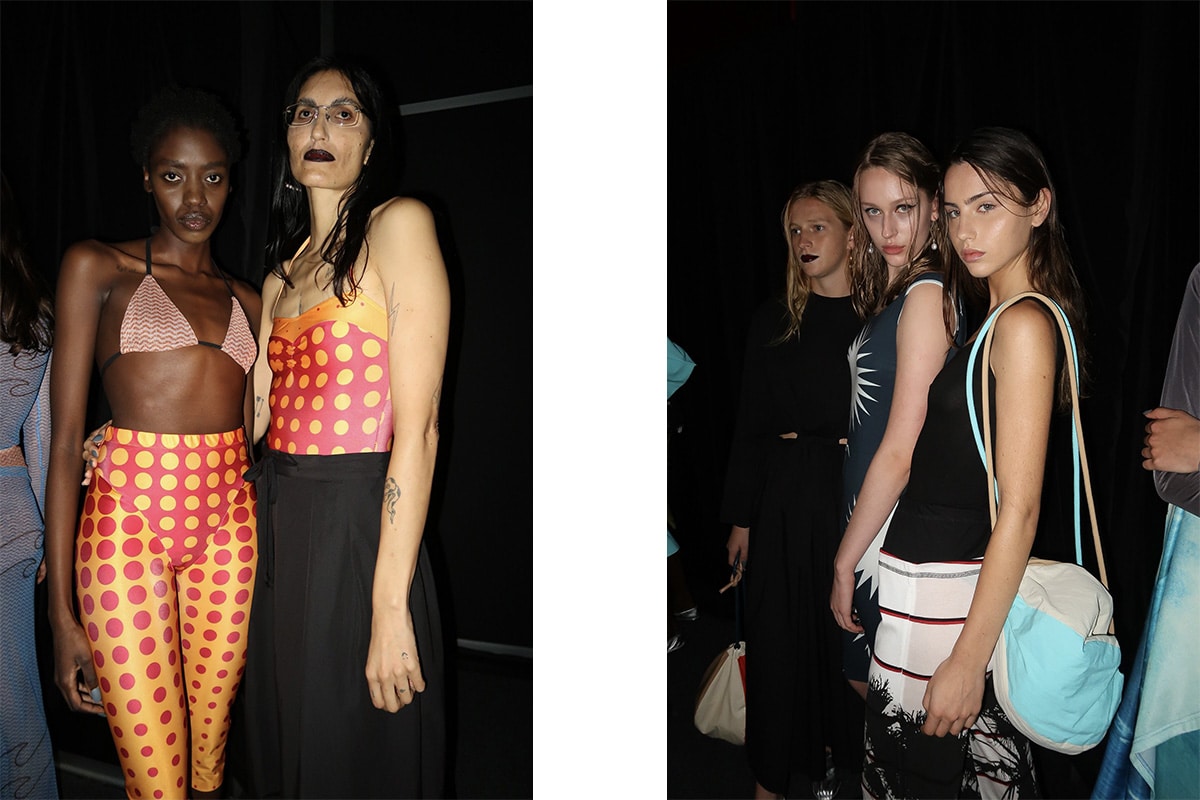
Images: Chelsea Holm
On a carpet the colour of Bubble O' Bill's nose, Verner made its AAFW debut. Ingrid Verner tells RUSSH how "sourcing and archiving found artefacts is a big part of my design process," and for the Lost Resort collection she found herself drawn towards "holiday souvenirs, travel postcards and beach ephemera" in order to probe this European idea of resort wear and what it translates to, really, in an Australian context. Motifs like beach balls, vintage polka dots and newspaper print – the kind that lines hot chips dashed in chicken salt – surfaced through the collection via statement handbags, vintage swimsuits, where high-hip cuts flow into floor length gowns, and practical T-shirts that balance the intense colours of summer.
Meanwhile, Ikuntji Artists' debut spotlights sacred storytelling from Luritja

Image: @ikuntjiartists
Blak excellence was at the heart of AAFW. Ngali was the first Aboriginal designer to have a standalone show, meanwhile the presentation from Ikuntji Artists on day four marked the first solo show from a First Nations arts centre. From design features to the prints used, each garment tells the unique and sacred Tjukurrpa (Dreaming) stories from one Ikuntji Artist to the next. For example, a linen power suit integrated Mavis Marks' Women's Business Story and a gown with a long flowing train illustrates the Kapi (water) flowing through the Western Desert. Ana Keshan, a Yorta Yorta, Gomeroi and Wiradjuri stylist, worked closely with the artists over the course of four two-week-long workshops to collaborate on the final collection pieces and honour Luritja culture. The collection "shows what an art centre from the small remote community of Ikuntji (Haasts Bluff) can achieve," says artist Keturah Zimran. "It gives us pride and strength to be seen, our designs be seen and we are being heard."
Jordan Gogos explores the link between art and sustainability
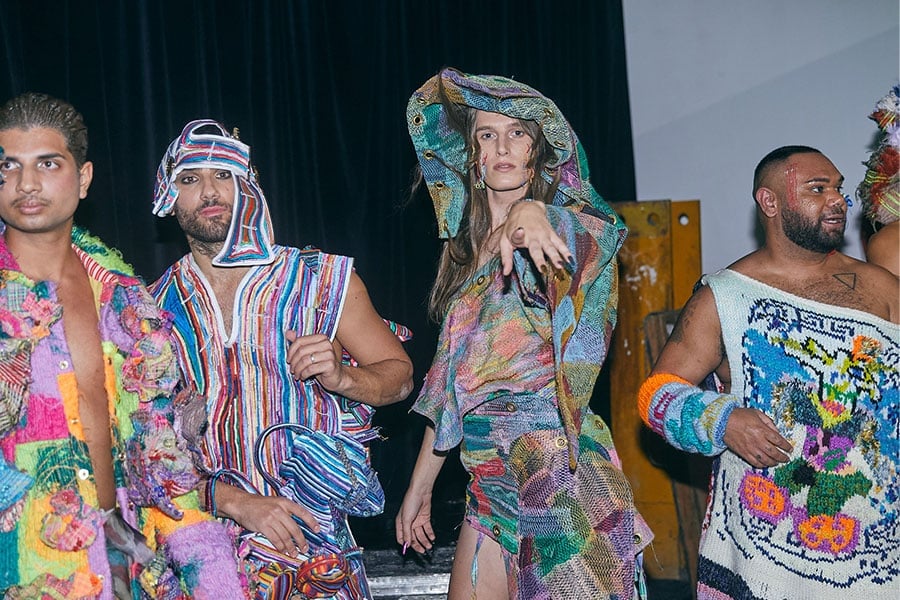
Before Jordan Gogos entered the world of fashion, the designer was creating objects, furniture and sculpture through his other eponymous label, GOGOS. His experience across a handful of disciplines means the designer is involved in every part of putting together his shows at AAFW, including the set design, which he took charge of for his collaboration with Akira Isogawa. Strewn across the runway were mounds of disused textiles Gogos had salvaged and reworked through patchwork and embroidery. The pieces will go on to enjoy a second life following the show, where they have been acquired for the collections of national institutions.
Gary Bigeni collaborates with Consuelo Cavaniglia
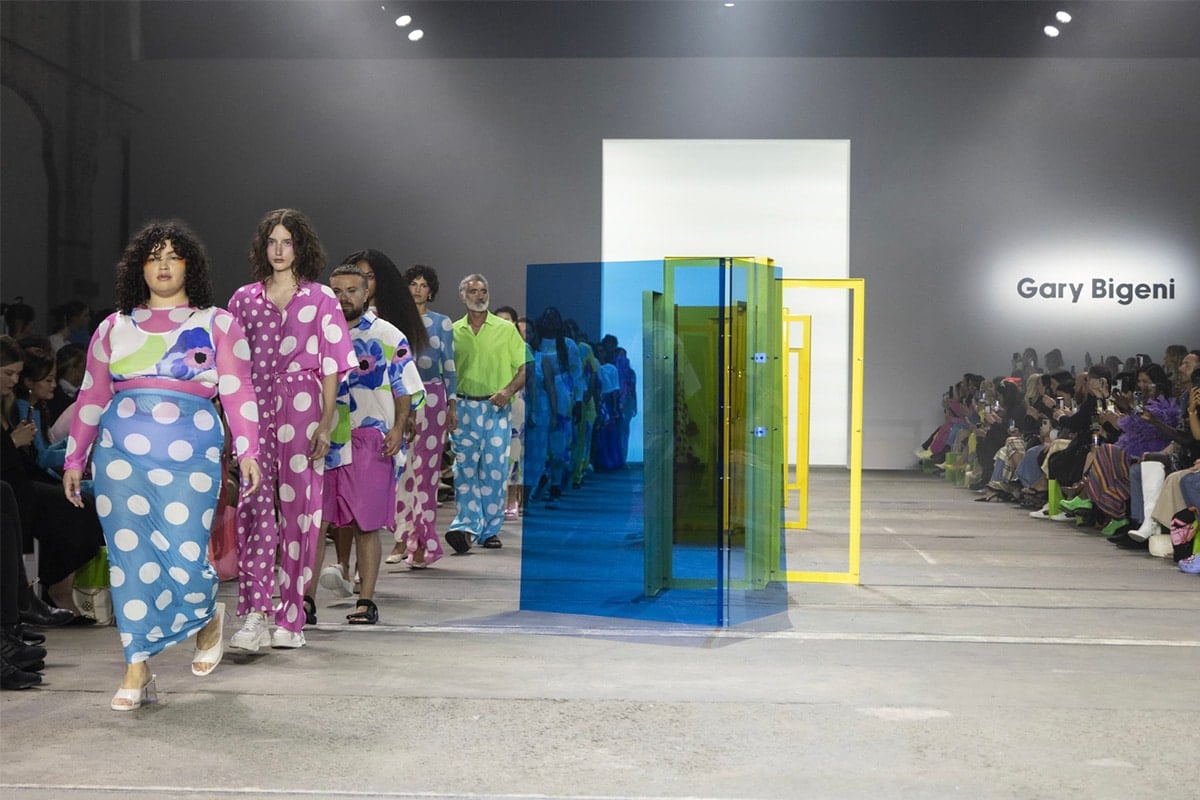
In 2003, Gary Bigeni presented at Australian Fashion Week as a student; Modern Romance, the designer's collection at AAFW in 2023 marks two decades in the industry. The collection celebrated Bigeni's deep adulation for colour, especially as a person growing up hearing impaired. To fully realise the concept, where turquoise polka dots clashed brilliantly with hand-painted prints of lime green, shocking pink and canary yellow, Bigeni enlisted the help of artist Consuelo Cavaniglia whose work prioritises polished acrylic sculptures. Cavaniglia crafted up a set of open doorways in lemon yellow and a calming blue scattered across the central point of the runway.
INJURY is leading the charge on the intersection between AI art and fashion
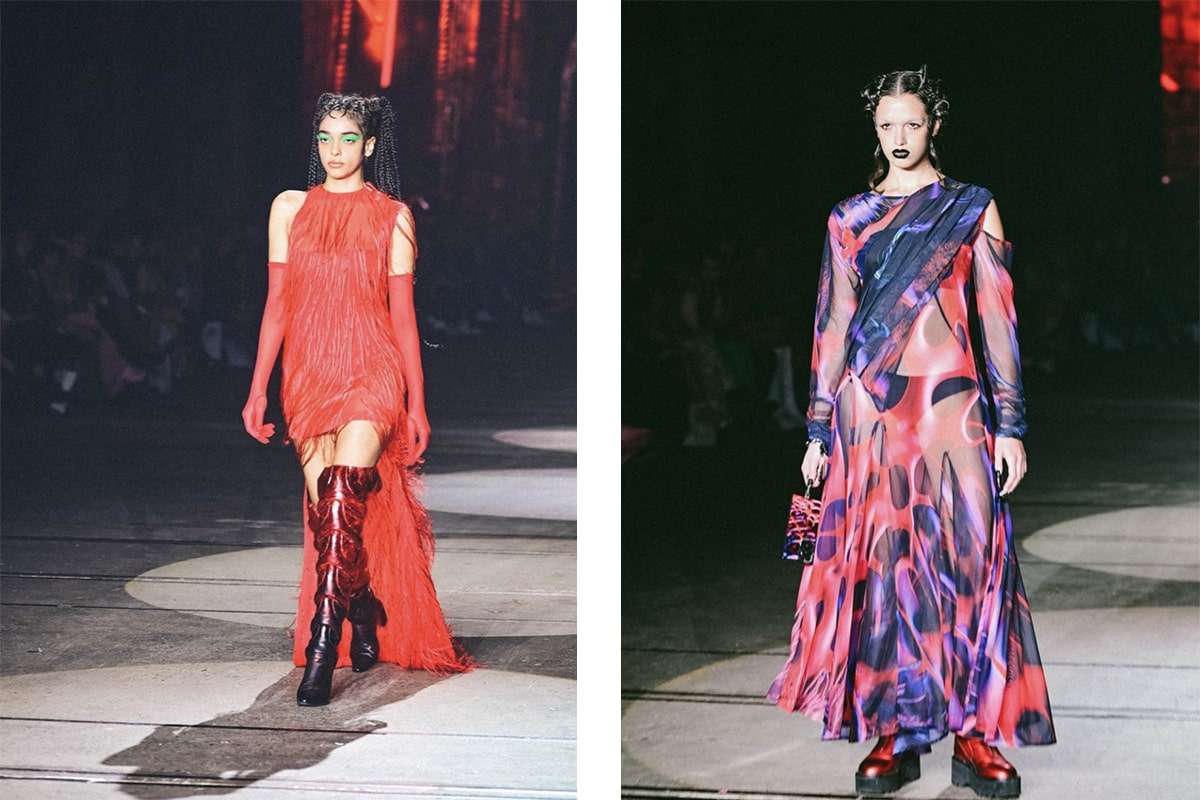
Images: @raelito.photos
"Fashion is an experience, whether physical or digital, it celebrates and represents identity and expression," Eugene Leung and Dan Tse of INJURY tell me. And like so many, the pair see fashion as falling under the umbrella of art. Last year, Leung and Tse held the first metaverse fashion show in Australia, this year INJURY married AI art and fashion in what they've dubbed a "phy-igtal" runway. Not only is this hybrid fashion experience "sustainably conscious" as digital clothing exists in lieu of physical garments during the sampling process, but the integration of AI technology streamlines ideation, while "whilst refining and developing them with detail and efficiency," says Tsu and Leung.


